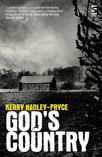Edgelands
- Kerry Hadley
- Dec 11, 2018
- 2 min read

I've been reading Marion Shoard's Edgelands http://www.marionshoard.co.uk/Documents/Articles/Environment/Edgelands-Remaking-the-Landscape.pdf in which she says: 'The edgelands... are raw and rough, and rather than seeming people friendly, are often sombre and menacing, flaunting their participation in activities we do not wholly understand. They certainly do not conform to people's idea of the picturesque...they seem desolate, forsaken and unconnected even to their own elements let alone to our preferred version of human life. If there is grassland, it is likely to be coarse and shaggy. It may be grazed by perhaps a few sheep enclosed by derelict fencing leading to tumbledown farm buildings. If ungrazed, it will be swamped by a riot of wild, invasive plants that seem to overrun everything in their path:fragments of tarmac, wrecks of cars and derelict buildings...less effectively policed than the high street...car crushing, sewage treatment or waste transfer are often located deliberately here lest they despoil preferred environments.' pp121-2.
I like this description, and I like that she calls them 'interfacial sites', and I see a lot of this, sometimes physically see it, but other time, feel it, here in the Black Country. I wrote a piece in which I described the Black Country as an edgeland of an edgeland. I think that's precisely where I've set this next novel. The fact of it being on a farm in a traditionally industrial (deindustrialised) area could perhaps imply the history of the place having sustained itself, that the pre-industrialisation remains and is now regarded as this edgeland place. I like the unmanaged, scruffy, left-aloneness of them. There is, according to Shoard, 'biological diversity, partly because they are ignored.' They are, to coin a 21st century phrase, 'off-grid'. Listen to this from Shoard: 'Yet this living museum of our recent past is also the powerhouse of the society of the present.'









Comments